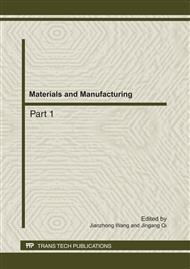p.940
p.945
p.949
p.955
p.962
p.966
p.970
p.974
p.978
Experiment Research on Impact of Total Rolling Reduction Ratio on the Properties of Vacuum Rolling-Bonding Ultra-Thick Steel Plate
Abstract:
Method of vacuum rolling-bonding can be used to produce ultra-thick steel plate over 100mm with continuous casting slab. In this paper, four groups steel plates have been rolled with 10%, 30%, 50% and 70% total reduction ratio respectively. The microstructure of the interface has been analyzed by optical and scanning electron microscopy (SEM). The reaction products formed at the interface have been identified by EDAX. It has been observed that the size and the amount of the reaction products decreased with the increase of the total reduction ratio. The tensile property of the thickness direction has been tested by the universal testing machine. The results indicated that, with the increase of the total reduction ratio, the strength had been increasing from 532MPa to 564MPa, and the plate plasticity became well.
Info:
Periodical:
Pages:
962-965
Citation:
Online since:
July 2011
Authors:
Price:
Сopyright:
© 2011 Trans Tech Publications Ltd. All Rights Reserved
Share:
Citation:


